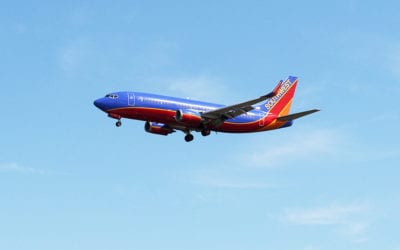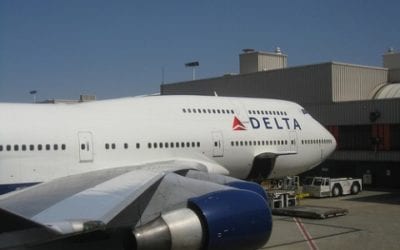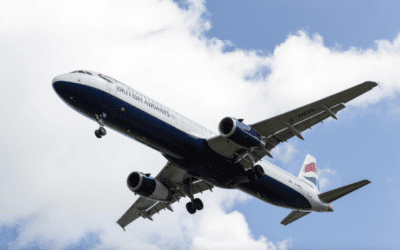Advertised airline ticket prices already leave out many things that used to be included, from meals to checked luggage to carry-on bags to prereserved seats. Case in point: Last month Lufthansa — not what you would normally think of as a no-frills or low-fare airline — began charging an extra fee to reserve a seat, even for passengers on long-haul flights paying fares averaging well over $1000.
Airlines don’t like comparison shopping, make it as hard as possible and positively hate passengers who don’t care what logo is painted on the tail of the plane. Airlines want brand loyal, price indifferent customers who pay (or whose employers pay) whatever the airline asks for — especially if it has a dominant position in the local market, such as at one of its hubs.
Because airlines won’t supply fee and surcharge data in normalized form, no airline ticket price comparison Web site allows you to specify, “I will have 1 checked bag and 1 carry-on bag” and then shows you options ranked in order of the total price including the fees for your luggage.
And of course there’s the chronic problem of advertised prices at which no tickets are available.
But that’s not good enough for airlines, which long to return to the days when — at least in the USA — they were allowed to advertise “base fares” when actual ticket prices could include tens or hundreds of dollars in additional taxes, “fees” and “surcharges”.
Sadly, airlines are close to getting their way with Congress on at least part of this agenda.
A bill called, in Orwellian Newspeak, the “Airfare Transparency Act,” has already made it out of committee and could be voted on by the U.S. House of Representatives at any time. This bill would allow airlines to advertise “fares” exclusive of all government-imposed taxes and fees.
Travelers United (the consumer advocacy organization I work with as a policy analyst, formerly called the Consumer Travel Alliance), has been sounding the alarm about the “Airfare Transparency Act”, with some success. A petition against the bill on Change.org, initiated by Travelers United founder Charlie Leocha, has already gotten more than 35,000 signatures. Please sign this petition and tell your Representative an Senators to oppose the “Airfare Transparency Act.”
CLICK HERE TO SIGN THE PETITION.
Airlines claim that requiring the most prominent price in an advertisement to be the total price a traveller has to pay, inclusive of taxes, prevents airlines from disclosing how much tax is included in that price. This is nonsense. No law or regulation prevents airlines from telling passengers how much tax is included in the prices we pay for airline tickets.
In fact, airlines are required by U.S. law to provide each ticket purchaser with a copy of his or her ticket. As stored in airlines’ internal databases and computerized reservation systems, each of those tickets (which travelers and ticket buyers rarely see in their entirety) includes a complete itemized breakdown of the fare and all taxes and government fees. Airlines have to include this information in their records in order to collect, report, and pay the right amounts to each of the various taxing authorities: the U.S. government, foreign governments, airport operating authorities, etc.
If air travellers don’t know how much they are paying in taxes, or to which government agencies the airlines are supposed to have forwarded which amounts of money for which purposes, that’s only because airlines are (a) failing to comply with their legal obligation to provide ticket purchasers with the “virtual coupon records” or e-ticket images that include the complete fare and tax breakdown, and (b) charging “surcharges” and “fees” that actually go to the airline but that are designed to look like (and are often misrepresented as being) taxes, rather than part of the fare.
There can be substantial differences in taxes — US$100 or more — between flights on otherwise similar routes to or via alternate airports in neighboring countries. So tickets with the same “fare” could cost significantly more or less when the taxes are included. As a result, the “Airfare Transparency Act” would make it harder to compare the total costs of air travel to different countries or airports, or to choose between them on the basis of price.
In addition, allowing airlines to advertise fares exclusive of taxes, while competing train and bus companies continue to advertise prices inclusive of the many taxes they pay, would make it harder to compare prices of air and surface travel, and make train and buses — which have been gaining market share from airlines — look less price-competitive than they are. Amtrak has never added any taxes or other required fees to its advertised inclusive prices.
To some people in the USA, advertising prices that don’t include taxes may seem reasonable. But most foreigners visiting the USA for the first time are shocked to be asked to pay for goods in a shop or a meal in a restaurant — often 30 percent more for a restaurant meal, including tax and expected tip — than the price on the tag or the menu. In most other countries, all marked prices for goods and services are total selling prices, even if they include “value-added tax” (VAT) or the like of as much as 25 percent. After experiencing both systems, I and many other people strongly prefer to have marked and advertised prices be “all-in” selling prices. You can still complain about the taxes — every sales slip or restaurant receipt, like every actual airline ticket, itemizes the taxes — but it’s so much easier to budget and comparison shop when the price you see is the exact amount you will have to pay.



